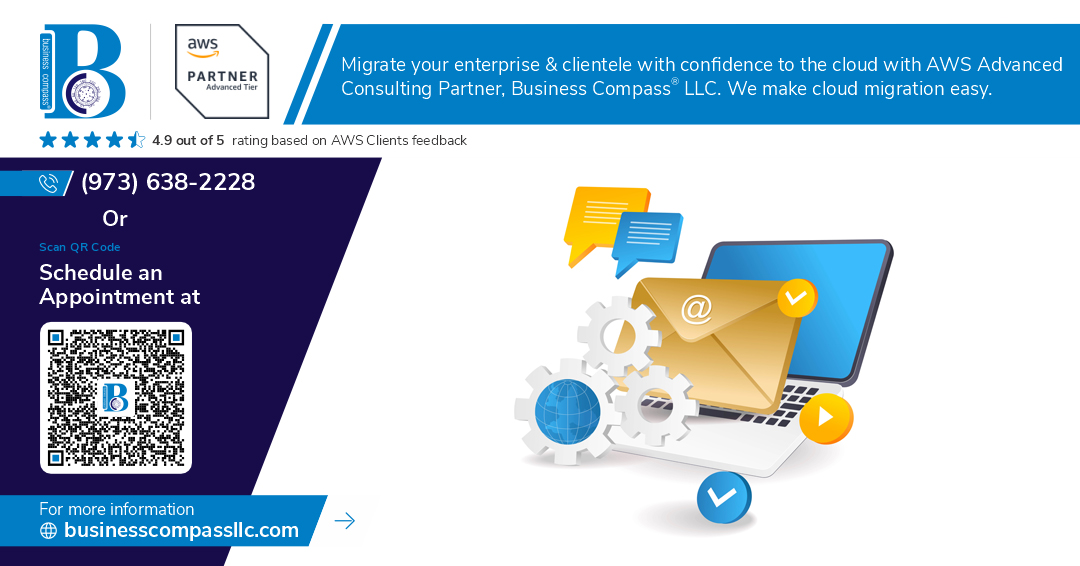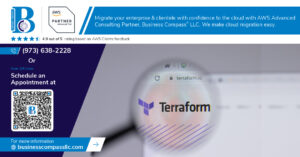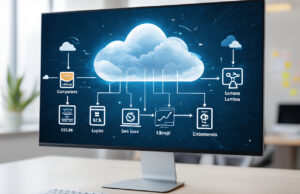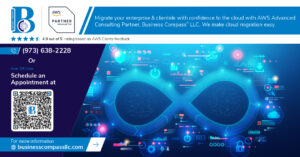Have you ever wondered how your emails magically appear in your inbox, accessible from any device, while spam stays mysteriously at bay? 🤔 Welcome to the intricate world of mail server architecture, where SMTP, IMAP, and spam filters work tirelessly behind the scenes to make your email experience seamless and secure.
For system designers, understanding these components is crucial. SMTP acts as the backbone of email transmission, IMAP ensures your messages are synchronized across all your devices, and spam filters stand guard, protecting you from unwanted and potentially harmful content. But how do these pieces fit together to create a robust mail server architecture?
In this blog post, we’ll dive deep into the mechanics of SMTP, IMAP, and spam filters, exploring their roles and integration in mail server design. Whether you’re a seasoned professional or an aspiring system designer, you’ll gain valuable insights into best practices for mail server management and learn how to create a more efficient, secure, and user-friendly email infrastructure. Let’s unravel the mysteries of mail server architecture together! 📧🔧
Understanding SMTP: The Backbone of Email Transmission
A. What is SMTP and its role in email communication
SMTP (Simple Mail Transfer Protocol) is the backbone of email communication, serving as the standard protocol for sending emails across the internet. It acts as a relay system, ensuring that your message reaches its intended recipient regardless of their email service provider or geographical location.
Key roles of SMTP in email communication:
- Message transmission
- Server-to-server communication
- Email routing
- Delivery notifications
| SMTP Function | Description |
|---|---|
| Outgoing mail | Handles sending emails from client to server |
| Mail relay | Transfers emails between different mail servers |
| Error reporting | Provides feedback on delivery status |
| Authentication | Verifies sender identity to prevent spam |
B. Key components of SMTP servers
SMTP servers consist of several crucial components that work together to ensure efficient email transmission:
- Mail Transfer Agent (MTA): The core component responsible for receiving and routing emails
- Mail Submission Agent (MSA): Accepts emails from client applications and initiates the sending process
- Message Store: Temporary storage for emails awaiting delivery
- DNS resolver: Looks up recipient domain information for routing
- Queue manager: Organizes and prioritizes outgoing messages
C. SMTP authentication methods
To maintain security and prevent unauthorized use, SMTP servers employ various authentication methods:
- Plain text authentication
- CRAM-MD5 (Challenge-Response Authentication Mechanism)
- SMTP AUTH
- TLS (Transport Layer Security)
Each method offers different levels of security, with TLS being the most secure option for encrypting SMTP communications.
D. Common SMTP error codes and troubleshooting
Understanding SMTP error codes is crucial for diagnosing and resolving email delivery issues:
| Error Code | Meaning | Troubleshooting |
|---|---|---|
| 421 | Service not available | Check server status and try again later |
| 450 | Mailbox unavailable | Verify recipient address and retry |
| 550 | Requested action not taken | Check for blacklisting or policy violations |
| 554 | Transaction failed | Review email content for potential spam triggers |
When encountering these errors, system designers should implement automated retry mechanisms and logging systems to track and resolve issues efficiently.
IMAP: Enabling Seamless Email Access Across Devices
IMAP vs. POP3: Choosing the right protocol
When designing a mail server architecture, choosing between IMAP and POP3 is crucial. Here’s a comparison of these protocols:
| Feature | IMAP | POP3 |
|---|---|---|
| Storage | Server-based | Client-based |
| Synchronization | Yes, across devices | Limited |
| Offline access | Configurable | Yes |
| Bandwidth usage | Higher | Lower |
| Server resources | More intensive | Less intensive |
IMAP is generally preferred for modern email systems due to its superior synchronization capabilities and flexibility.
How IMAP synchronizes messages and folders
IMAP’s synchronization process involves:
- Establishing a connection to the mail server
- Retrieving folder structure and message headers
- Downloading message bodies on demand
- Synchronizing read/unread status and flags
- Updating server with local changes
This approach ensures consistent email access across multiple devices, making IMAP ideal for users who rely on various platforms to check their email.
Security considerations for IMAP implementation
To ensure a secure IMAP implementation:
- Use SSL/TLS encryption for all connections
- Implement strong authentication methods (e.g., OAuth2)
- Regularly update and patch your IMAP server software
- Monitor for unusual access patterns or potential breaches
Optimizing IMAP performance for large mailboxes
For efficient handling of large mailboxes:
- Implement message caching mechanisms
- Use server-side search and filtering
- Employ compression techniques for data transfer
- Consider implementing folder quotas to manage storage
With these optimizations, IMAP can provide seamless email access even for users with extensive email archives. Next, we’ll explore how spam filters play a crucial role in maintaining clean and secure inboxes.
Spam Filters: Keeping Inboxes Clean and Secure
Types of spam filtering techniques
Spam filtering techniques have evolved significantly to combat the ever-growing threat of unwanted emails. Here are the primary types of spam filtering techniques used in modern mail server architectures:
- Content-based filtering
- Sender reputation filtering
- Rule-based filtering
- Bayesian filtering
| Technique | Description | Pros | Cons |
|---|---|---|---|
| Content-based | Analyzes email content for spam indicators | Highly effective for known patterns | Can be fooled by clever spammers |
| Sender reputation | Checks sender’s IP and domain reputation | Blocks known spam sources | May block legitimate bulk emails |
| Rule-based | Uses predefined rules to identify spam | Easy to implement and customize | Requires frequent updates |
| Bayesian | Uses probability to classify emails | Adapts to new spam patterns | Needs training period |
Machine learning algorithms in spam detection
Machine learning has revolutionized spam detection by enabling filters to adapt and improve over time. Popular algorithms include:
- Support Vector Machines (SVM)
- Naive Bayes classifiers
- Random Forests
- Deep Learning neural networks
These algorithms analyze various email attributes, such as subject lines, content, and metadata, to make accurate spam predictions. As they process more emails, their accuracy improves, making them highly effective against evolving spam tactics.
Customizing spam filters for different user needs
Integrating SMTP, IMAP, and Spam Filters in Mail Server Architecture
Designing a scalable mail server infrastructure
When integrating SMTP, IMAP, and spam filters into a mail server architecture, scalability is crucial. A well-designed infrastructure should handle increasing email volumes without compromising performance. Consider the following key elements:
- Modular architecture
- Horizontal scaling
- Caching mechanisms
- Database optimization
| Component | Scalability Approach |
|---|---|
| SMTP | Multiple MTA servers |
| IMAP | Distributed storage |
| Spam Filter | Parallel processing |
Load balancing and redundancy considerations
To ensure high availability and optimal performance, implement load balancing and redundancy:
- Use round-robin DNS or dedicated load balancers
- Set up failover clusters for critical components
- Implement data replication across multiple servers
Implementing secure communication protocols
Security is paramount in email systems. Adopt these protocols:
- TLS/SSL for encrypted connections
- DKIM and SPF for email authentication
- STARTTLS for opportunistic encryption
Monitoring and logging for troubleshooting
Effective monitoring and logging are essential for maintaining a healthy mail server:
- Implement real-time monitoring of server health and performance
- Set up comprehensive logging for all server components
- Use log analysis tools to identify patterns and anomalies
Ensuring compliance with email regulations
Adhere to email regulations to maintain trust and avoid legal issues:
- Implement opt-in/opt-out mechanisms
- Provide clear privacy policies
- Ensure proper handling of personal data
- Regularly audit your email practices
By carefully integrating these components and following best practices, you can create a robust, scalable, and secure mail server architecture that meets the demands of modern email communication.
Best Practices for Mail Server Management
Regular security audits and updates
To maintain a robust mail server infrastructure, regular security audits and updates are crucial. Conduct comprehensive security assessments at least quarterly, focusing on:
- Vulnerability scanning
- Configuration reviews
- Access control audits
- Encryption protocols
Implement a structured update schedule to ensure all components are running the latest, most secure versions:
| Component | Update Frequency |
|---|---|
| Operating System | Monthly |
| Mail Server Software | Quarterly |
| Spam Filter | Bi-weekly |
| Antivirus | Daily |
Implementing email archiving solutions
Email archiving is essential for compliance, data retention, and efficient storage management. Consider the following when implementing an archiving solution:
- Define retention policies based on legal requirements
- Choose between on-premises or cloud-based archiving
- Implement indexing and search capabilities
- Ensure data compression and deduplication
Disaster recovery and backup strategies
Protect your mail server against data loss and downtime with robust disaster recovery and backup strategies:
- Implement real-time replication to a secondary site
- Perform daily incremental backups and weekly full backups
- Test restore procedures regularly
- Maintain offsite backups for added security
User education on email security
Empower users to be the first line of defense against email-based threats:
- Conduct regular security awareness training
- Provide guidelines for identifying phishing attempts
- Educate users on proper password management
- Encourage the use of multi-factor authentication
By implementing these best practices, you can significantly enhance the security, reliability, and efficiency of your mail server infrastructure. Remember to regularly review and update these practices to stay ahead of evolving threats and technological advancements in the email landscape.
Email remains a cornerstone of modern communication, and understanding the key components of mail server architecture is crucial for system designers. SMTP serves as the foundation for email transmission, ensuring messages reach their intended recipients across diverse networks. IMAP empowers users to access their emails seamlessly across multiple devices, maintaining a synchronized view of their inbox. Spam filters play a vital role in maintaining the integrity and security of email systems, protecting users from unwanted and potentially harmful messages.
By integrating SMTP, IMAP, and robust spam filtering mechanisms, system designers can create efficient and secure mail server architectures. Implementing best practices for mail server management, such as regular updates, monitoring, and security audits, further enhances the reliability and performance of email systems. As email continues to evolve, staying informed about these core technologies and their optimal implementation will be essential for creating email solutions that meet the demands of modern users and businesses.



















